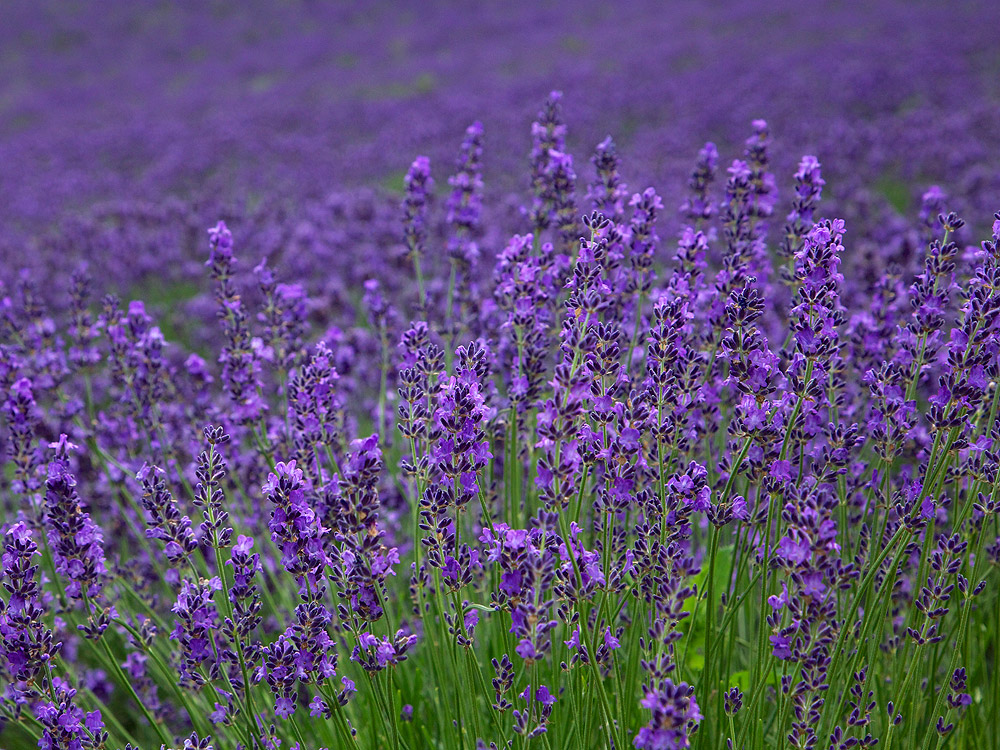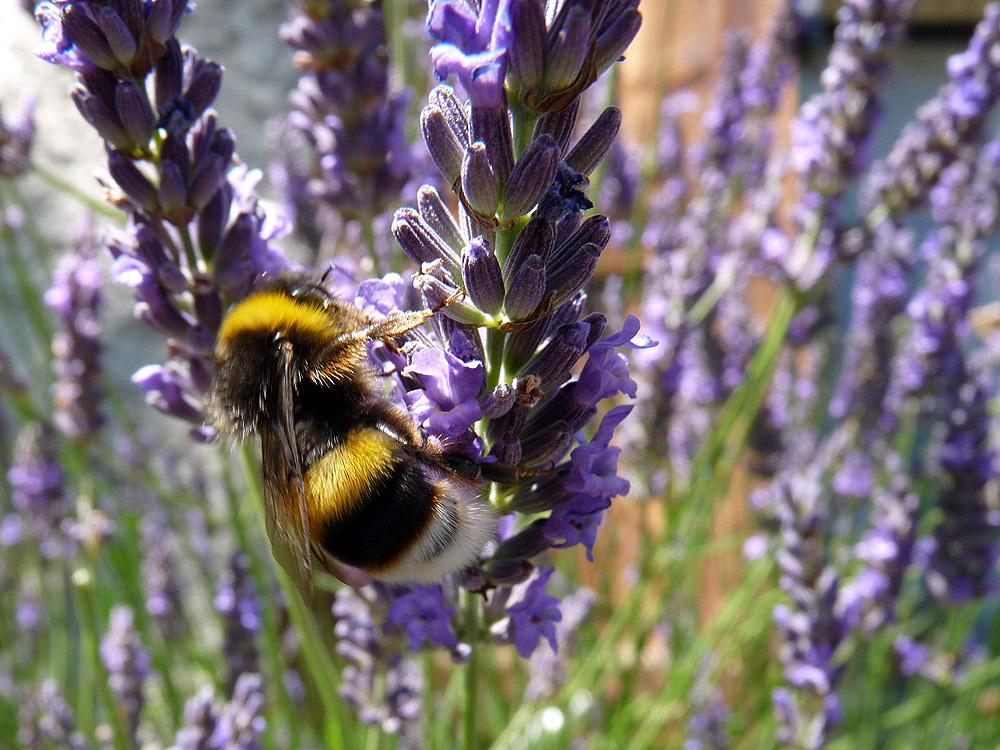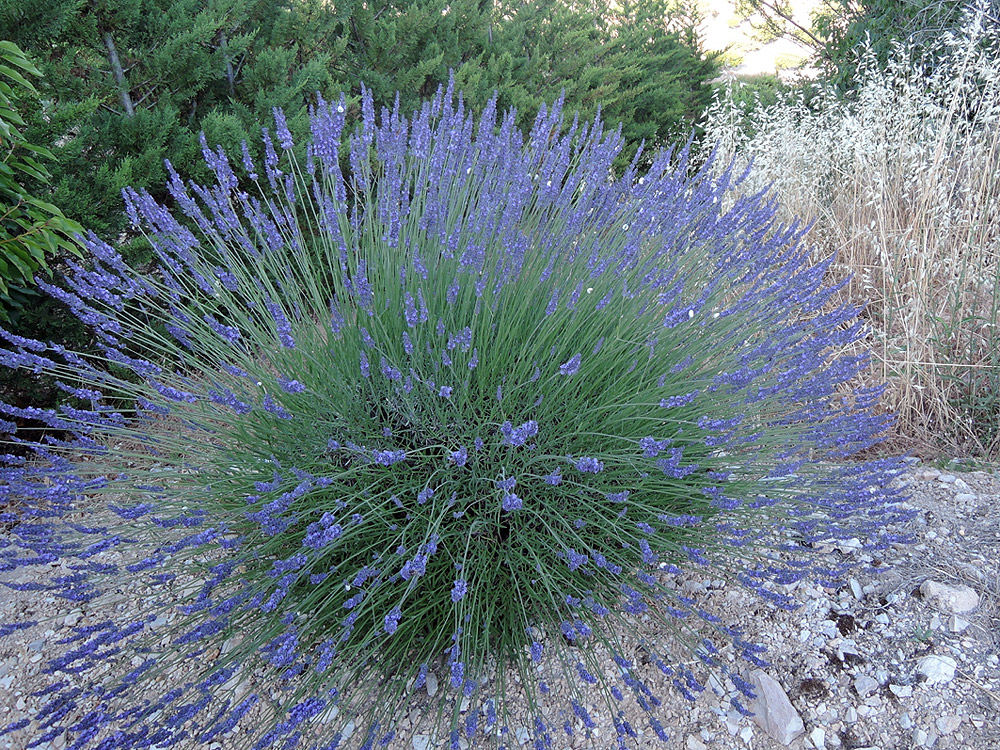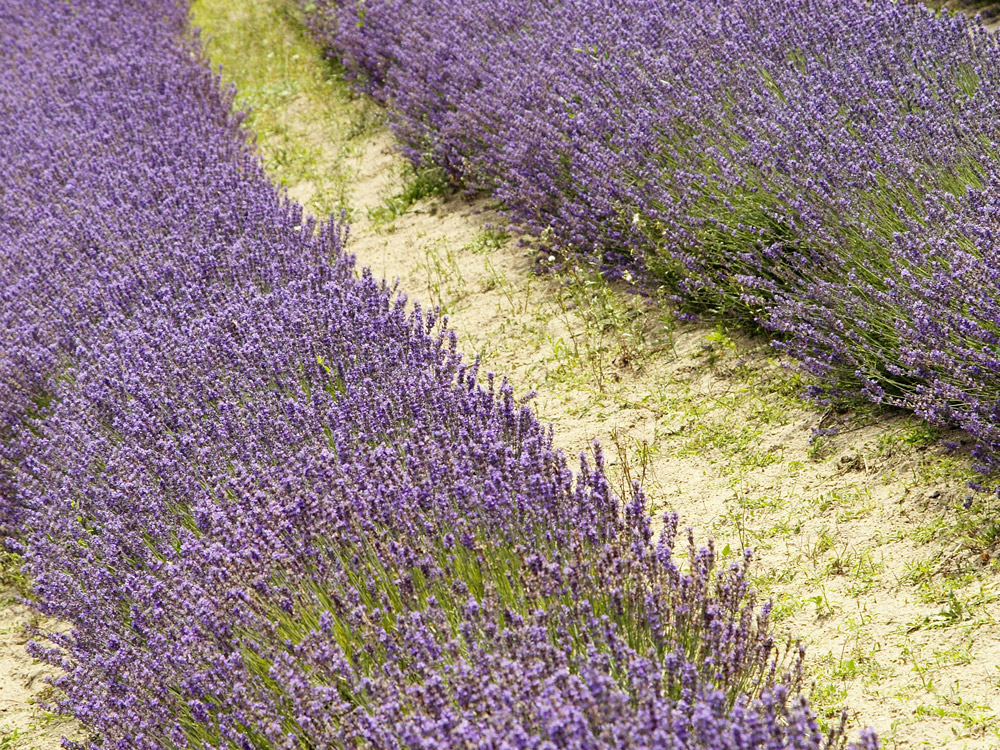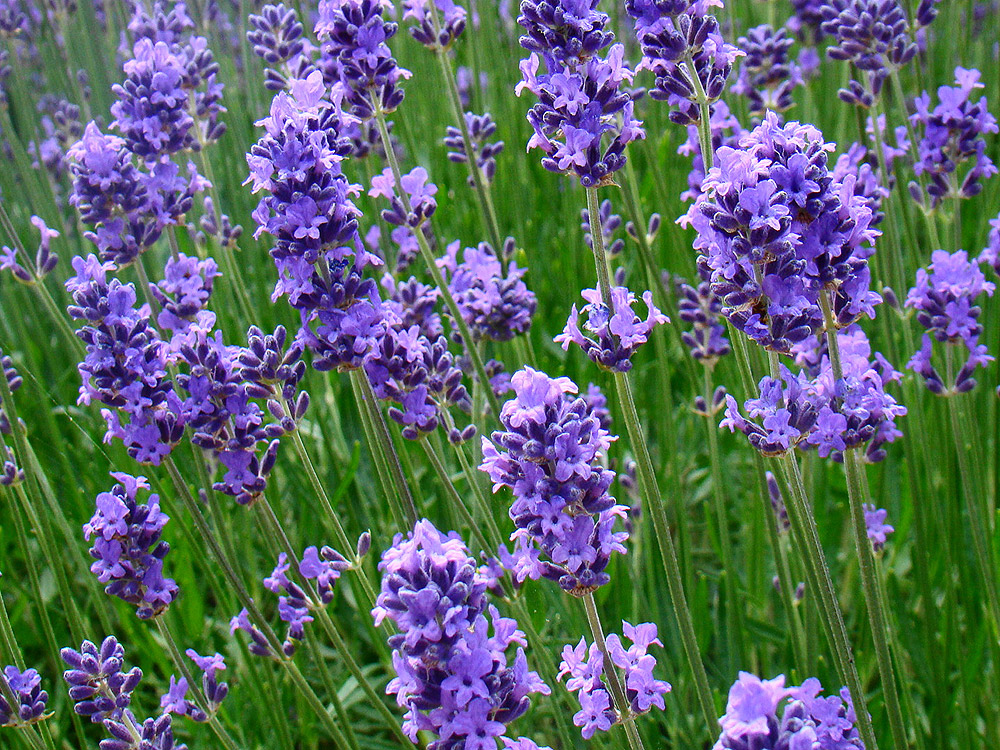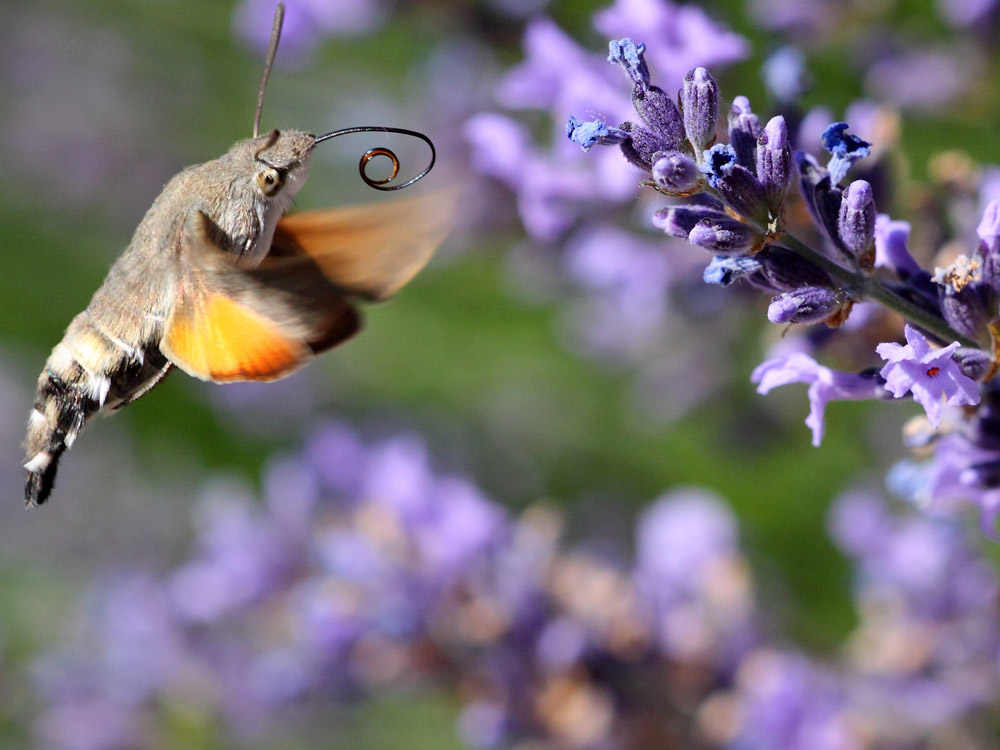Garden Plants, How
and where to grow them
Shrubs / Hedging
Lavender
Lavandula angustifolia - shrub
Lavender is an excellent and reliable garden plant if planted in the right position, and every garden has a position that is right for lavender.
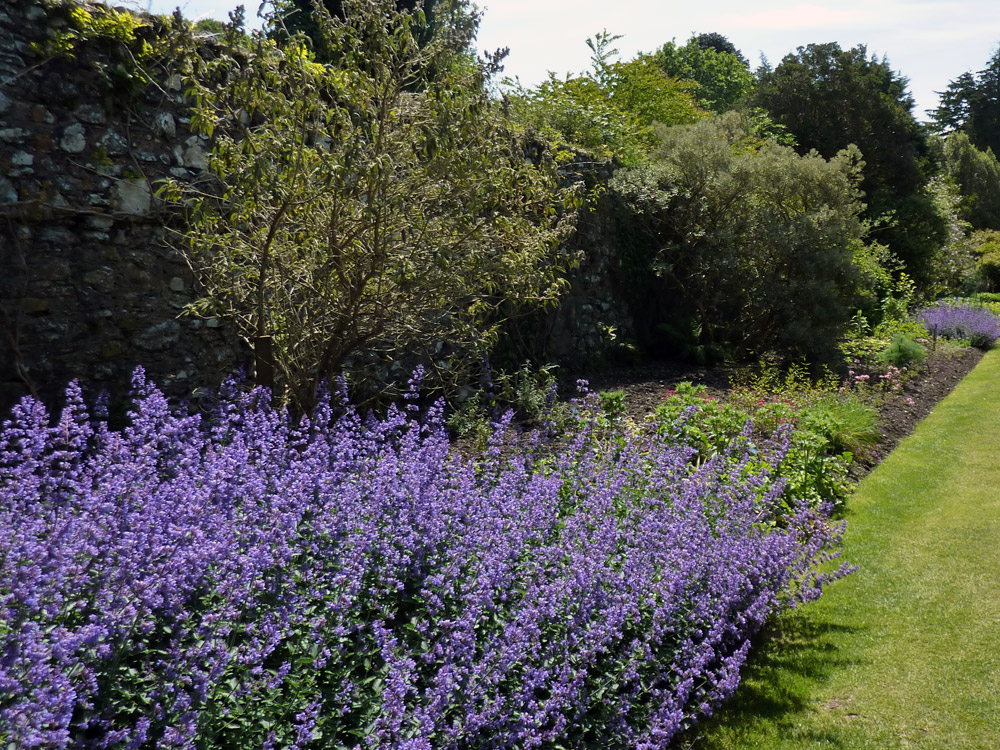 Lavender can cope with cold and they can cope with wet,
but they don't like the two together. In their
native Mediterranean home, lavenders live in full sun on stony,
poor, impoverished soil. In your garden this translates to a
sunny, though not necessarily full sun position in dryish soil
- near the house or a wall is fine - where other plants would
struggle for moisture, lavender will often thrive.
Lavender can cope with cold and they can cope with wet,
but they don't like the two together. In their
native Mediterranean home, lavenders live in full sun on stony,
poor, impoverished soil. In your garden this translates to a
sunny, though not necessarily full sun position in dryish soil
- near the house or a wall is fine - where other plants would
struggle for moisture, lavender will often thrive.
What you get with lavender is dense spikes of fragrant, blue-purple summer flowers and aromatic, grey-green leaves. The species is rather large, frequently available varieties are "Hidcote" and "Munstead dwarf". French lavender Lavandula stoechas is a particularly beautiful variety, though less hardy than most, in particular they don't like exposed windy conditions.
Lavender are excellent plants for attracting wildlife , possibly
too much so for some people, don't plant them close to the
house or patios if bees are likely to cause panic.
- Height and spread: Hidcote 60cm x 75cm (24" x 30") Munstead dwarf 45cm x 60cm (18" x 24")
- Position: full sun
- Soil: almost any, but not wet in winter
- Rate of growth: average
- Flowering period: July to September
- Flower colour: blue-purple
- Other features: the aromatic flowers and leaves can be used for making pot-pourri
- Hardiness: fully hardy
- Garden care: Cut back the stalks after the flowers have faded. Carefully trim back in April, taking care not to cut into old wood.
- Uses - Hedging / mixed border
- Planting distance when used for hedging: 30cm, 12"
- Clipped height: 0.6-1m, 2-3ft Pruning
- Number of times to clip per season and when: 1, after flowering
- Responds to renovation?: No
- Pruning: Deadhead only in autumn, leave pruning until spring so that the young buds can be protected. Young plants can be pruned to promote bushy growth, but regrowth ability diminishes with age. Plants may or may not grow again from old brown wood (tendency decreasing with age). Very large unruly plants are best replaced.
Q. Hello, I am aiming to have a lavender hedge around our allotment and each individual bed surrounded by dwarf box. I have bought some small plants of lavender Hidcote and Buxus sempervivens Suffruticosa. To buy enough would cost a fortune . Could you please advise on the best way to propagate from my existing tiny plants.
A. Propagation of dozens of plants from a few will take years. I suggest that you look in the yellow pages to find a wholesale nursery that supplies lavender plants. They are much cheaper if bought in bulk. You should be able to get them as 4cm (ish) plugs or in 9cm pots usually with a minimum order of about 50. They won't deliver for such quantities, collection only. As for your Buxus, a similar situation but slower, it will take you 5-10 years to get a good knitted together dwarf Buxus hedge and that's assuming that you don't attack what you've got for cuttings. I'd recommend that you use what you have as feature balls or pyramids and make a low hedge from Lonicera nitida or even yellow privet trimmed closely unless you really can be patient enough to grow a box hedge..
Photo credits: (numbering left to right top to bottom) 1-Andrew Bowden from London - Creative Commons 2.0 licence. / 2-Chi King - Creative Commons 2.0 licence. / 3-French Jonas - Creative Commons 3.0 unported licence. / 4-Intermittentgardener - Creative Commons 3.0 unported licence. / 5-Jersey Tourism - Creative Commons 2.0 licence. / 6-Off2riorob - Creative Commons 3.0 unported licence. / 7-Thorsten Denhard - Creative Commons 3.0 unported licence.
Copyright 2000 - present. All Rights Reserved | Privacy Policy Statement

